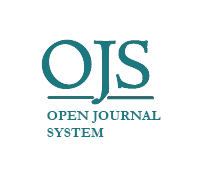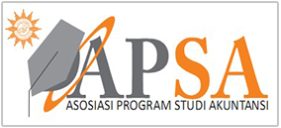How Financial Distress Affect The Coping Strategy? Case Of Indonesian MSME’s During The Covid-19 Outbreak
DOI:
https://doi.org/10.22219/jrak.v13i1.22209Keywords:
Coping Strategy, COVID-19 Outbreak, Decision Making, Financial Distress, Leadership Skills, Self-EfficacyAbstract
This research intends to examine the effect of financial distress, self-efficacy, and leadership skills on coping strategy in time of COVID-19 pandemic. This study focuses on the coping strategy implementation of MSMEs in Indonesia during economic downturn due to the pandemic. We examine 125 MSMEs in Indonesia as our respondents. We employ multinomial logistics regression technique to test the hypotheses. Our findings show that financial distress negatively affects the choice of coping strategy. On the other hand, self-efficacy and leadership skills have a positive impact on coping strategy. Financial distress, self-efficacy, and leadership skills are empirically proven as the determinant factors that influence the coping strategy selection process during the COVID-19 pandemic. This research uses a new perspective of financial distress scales and leadership skills aspects as a new insight in coping strategy decision making process. This study contributes to the development literature on coping strategy and its determinant factors during crisis conditions. practically, this research has implications to the development of coping strategy models and its influenced factors for business practitioners, especially on how to develop coping models during crisis condition.
Downloads
References
Balasubramanian, S. A., Radhakrishna, G. S., Sridevi, P., & Natarajan, T. (2019). Modeling corporate financial distress using financial and non-financial variables: The case of Indian listed companies. International Journal of Law and Management, 61(3–4), 457–484. https://doi.org/10.1108/IJLMA-04-2018-0078
Beins, B. C. (2017). Research method: A tool for life. Cambridge University Press.
Bhattacharyya, S. S., & Malik, A. (2020). Development of an integrated canvas on turnaround strategy. In International Journal of Organizational Analysis (Vol. 28, Issue 2). https://doi.org/10.1108/IJOA-02-2019-1646
Boin, A. (2009). The new world of crises and crisis management: Implications for policymaking and research. Review of Policy Research, 26(4), 367–377. https://doi.org/10.1111/j.1541-1338.2009.00389.x
Chowdhury, T., Sarkar, A., & Paul, S. K. (2020). A case study on strategies to deal with the impacts of COVID-19 pandemic in the food and beverage industry.
Duarte Alonso, A., Kok, S., Sakellarios, N., & O’Brien, S. (2019). Micro enterprises, self-efficacy and knowledge acquisition: Evidence from Greece and Spain. Journal of Knowledge Management, 23(3), 419–438. https://doi.org/10.1108/JKM-02-2018-0118
Eggers, F. (2020). Masters of disasters? Challenges and opportunities for SMEs in times of crisis. Journal of Business Research, 116(May), 199–208. https://doi.org/10.1016/j.jbusres.2020.05.025
El Chaarani, H., Vrontis, Prof. D., El Nemar, S., & El Abiad, Z. (2021). The impact of strategic competitive innovation on the financial performance of SMEs during COVID-19 pandemic period. Competitiveness Review: An International Business Journal, ahead-of-p(ahead-of-print). https://doi.org/10.1108/cr-02-2021-0024
Fabeil, N. F., Pazim, K. H., Langgat, J., & Perceptions, C. (2020). Journal of Economics. May. https://doi.org/10.31014/aior.1992.03.02.241
Farooq, M., Qureshi, S. F., & Bhutta, Z. M. (2021). Indirect financial distress costs in non-financial firms: Evidence from an emerging market. Pacific Accounting Review, 33(4), 417–434. https://doi.org/10.1108/PAR-09-2020-0127
Ghozali, I. (2016). Aplikasi Analisis Multivariate dengan Program IBM SPSS 23. (Edisi 8). Semarang: Badan Penerbit Universitas Diponegoro.
Hofer, C. W. (1980). Turnaround Strategies. The Journal of Business Strategy, 19–31.
Höpfner, J., & Keith, N. (2021). Goal Missed, Self Hit: Goal-Setting, Goal-Failure, and Their Affective, Motivational, and Behavioral Consequences. Frontiers in Psychology, 3991.
Huu, H., Minh, V., Nguyen, A., & Tran, T. (2021). Research in International Business and Finance Financial performances , entrepreneurial factors and coping strategy to survive in the COVID-19 pandemic: Case of Vietnam. Research in International Business and Finance, 56(December 2020), 101380. https://doi.org/10.1016/j.ribaf.2021.101380
Locke, E. A., & Latham, G. P. (2012). Goal setting theory. In Motivation: Theory and research (pp. 23–40). Routledge.
Locke, E. A., & Latham, G. P. (2013). Goal setting theory: The current state. In New developments in goal setting and task performance (pp. 623–630). Routledge.
Locke, E. A., & Latham, G. P. (2019). The development of goal setting theory: A half century retrospective. Motivation Science, 5(2), 93.
Lönnfjord, V., & Hagquist, C. (2018). The Psychometric Properties of the Swedish Version of the General Self-Efficacy Scale: A Rasch Analysis Based on Adolescent Data. Current Psychology, 37(4), 703–715. https://doi.org/10.1007/s12144-016-9551-y
McCarthy, S., Oliver, B., & Song, S. (2017). Corporate social responsibility and CEO confidence. Journal of Banking and Finance, 75, 280–291. https://doi.org/10.1016/j.jbankfin.2016.11.024
Montani, F., Torres, C., Ferreira, M. C., Mendonça, H., Silva, A. J., Courcy, F., & Dagenais-Desmarais, V. (2021). Self-image goals, compassionate goals and innovative work behavior: The role of organizational support for innovation across countries. Journal of Business Research, 137(August), 588–600. https://doi.org/10.1016/j.jbusres.2021.08.072
Ogbonnaya, C., Dhir, A., Maxwell-cole, A., & Gorny, T. (2022). Cost-cutting actions , employment relations and workplace grievances: Lessons from the 2008 financial crisis. Journal of Business Research, 152(July), 265–275. https://doi.org/10.1016/j.jbusres.2022.07.055
Parker, L. D. (2020). The COVID-19 office in transition: Cost , efficiency and the social responsibility business case. 2020(February). https://doi.org/10.1108/AAAJ-06-2020-4609
Prawitz, A. D., Garman, E. T., Sorhaindo, B., O’Neill, B., Kim, J., & Drentea, P. (2006a). In Charge financial distress/financial well-being scale: Development, administration, and score interpretation. Journal of Financial Counseling and Planning, 17(1), 34–50. https://doi.org/10.1037/t60365-000
Prawitz, A. D., Garman, E. T., Sorhaindo, B., O’Neill, B., Kim, J., & Drentea, P. (2006b). In Charge financial distress/financial well-being scale: Development, administration, and score interpretation. Journal of Financial Counseling and Planning, 17(1), 34–50. https://doi.org/10.1037/t60365-000
Scott, S. G., & Bruce, R. A. (1995). Decision-Making Style: The Development and Assessment of a New Measure. Educational and Psychological Measurement, 55(5), 818–831. https://doi.org/10.1177/0013164495055005017
Smith, K. J., Haight, T. D., Emerson, D. J., Mauldin, S., Wood, B. G., Smith, K. J., Haight, T. D., Emerson, D. J., & Mauldin, S. (2019). Resilience as a coping strategy for reducing departure intentions of accounting students. Accounting Education, 0(0), 1–32. https://doi.org/10.1080/09639284.2019.1700140
Sobakinova, D., Zhou, Y., & Durrani, D. K. (2020a). The role of human capital outcomes in generating business ideas. VINE Journal of Information and Knowledge Management Systems, 50(1), 163–183. https://doi.org/10.1108/VJIKMS-03-2019-0033
Sobakinova, D., Zhou, Y., & Durrani, D. K. (2020b). The role of human capital outcomes in generating business ideas. VINE Journal of Information and Knowledge Management Systems, 50(1), 163–183. https://doi.org/10.1108/VJIKMS-03-2019-0033
Takahashi, H., & Yamada, K. (2021). Re l P Jo ur na. International Review of Financial Analysis, 101670. https://doi.org/10.1016/j.irfa.2021.101670
Tao, Y., Xu, G., & Liu, H. (2020). Compensation gap, retrenchment strategy and organizational turnaround: A configurational perspective. Journal of Organizational Change Management, 33(5), 925–939. https://doi.org/10.1108/JOCM-11-2019-0340
Uzonwanne, F. C. (2016). Influence of age and gender on decision-making models and leadership styles of non-profit executives in Texas, USA. International Journal of Organizational Analysis, 24(2), 186–203. https://doi.org/10.1108/IJOA-05-2013-0667
Vecchi, G. M., Wong, G. K. H., Wong, P. W. C., & Markey, M. A. (2019). Negotiating in the skies of Hong Kong: The efficacy of the Behavioral Influence Stairway Model (BISM) in suicidal crisis situations. Aggression and Violent Behavior, 48(August), 230–239. https://doi.org/10.1016/j.avb.2019.08.002
Yazdanfar, D., & Öhman, P. (2020). Financial distress determinants among SMEs: Empirical evidence from Sweden. Journal of Economic Studies, 47(3), 547–560. https://doi.org/10.1108/JES-01-2019-0030
Younas, N., UdDin, S., Awan, T., & Khan, M. Y. (2021). Corporate governance and financial distress: Asian emerging market perspective. Corporate Governance (Bingley), 21(4), 702–715. https://doi.org/10.1108/CG-04-2020-0119
Zahurul, D., Khalid, N., Rayeva, E., & Ahmed, U. (2020). COVID-19 and Financial Performance of SMEs: Examining the Nexus of Entrepreneurial Self-Efficacy , Entrepreneurial Resilience and Innovative Work Behavior. Revista Argentina de Clínica Psicológica, XXIX, 587–593. https://doi.org/10.24205/03276716.2020.761
Downloads
Published
Issue
Section
License
Copyright (c) 2023 Agus Triyani, Suhita Whini Setyahuni

This work is licensed under a Creative Commons Attribution 4.0 International License.

Jurnal Reviu Akuntansi dan Keuangan is licensed under a Creative Commons Attribution-NonCommercial-ShareAlike 4.0 International License.
Authors who publish with this journal agree to the following terms:
- Authors retain copyright and grant the journal right of first publication with the work simultaneously licensed under a Creative Commons Attribution-NonCommercial-ShareAlike 4.0 International License that allows others to share the work with an acknowledgement of the work's authorship and initial publication in this journal.
- Authors are able to enter into separate, additional contractual arrangements for the non-exclusive distribution of the journal's published version of the work (e.g., post it to an institutional repository or publish it in a book), with an acknowledgement of its initial publication in this journal.
- Authors are permitted and encouraged to post their work online (e.g., in institutional repositories or on their website) prior to and during the submission process, as it can lead to productive exchanges, as well as earlier and greater citation of published work (See The Effect of Open Access).










